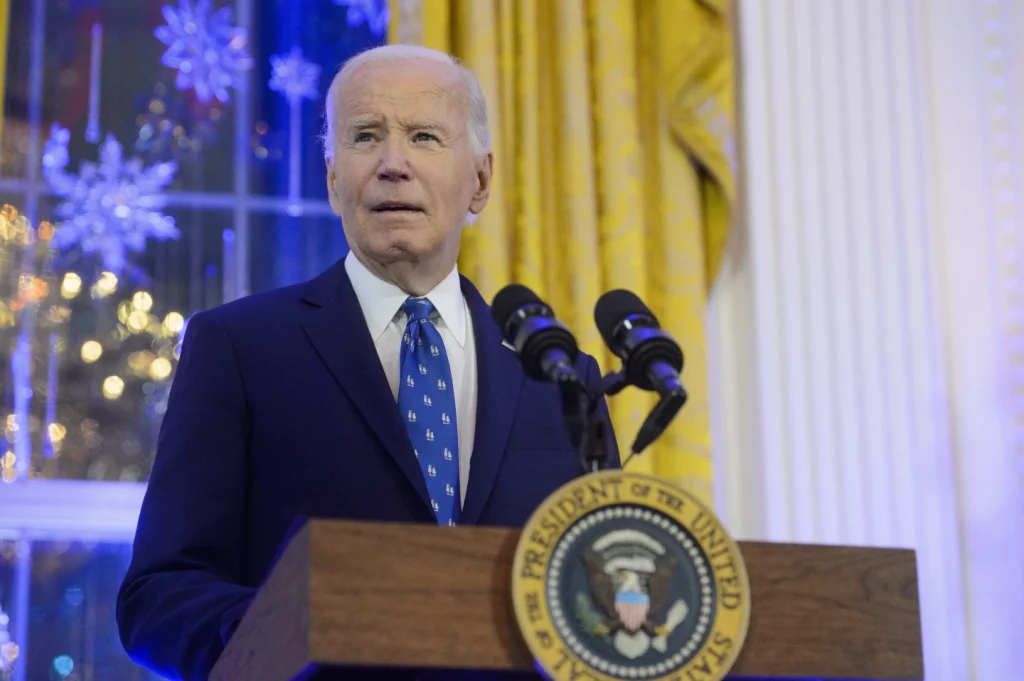Biden pledges to cut US greenhouse gases by more than 60% as he exits world stage

As President Joe Biden prepares to exit the global stage following his tenure, he has made a significant pledge to combat climate change, promising to reduce the United States’ greenhouse gas emissions by more than 60% by 2030. This ambitious goal comes as part of his administration’s continued efforts to address the climate crisis, a key element of his policy platform since taking office. Biden’s commitment reflects the growing urgency of global action on climate change, particularly as nations continue to face extreme weather events, rising temperatures, and the economic impacts of environmental degradation.
Biden’s Climate Commitment
In a recent statement, Biden reiterated his administration’s commitment to meeting its climate targets and leading by example on the global stage. The pledge to cut greenhouse gas emissions by at least 60% by 2030 is in line with the broader goals outlined in the U.S. climate strategy. The target is a substantial increase from previous commitments, aiming to significantly curb emissions from sectors such as transportation, energy production, and industry.
Biden’s promise builds on the U.S.’s re-entry into the Paris Agreement, which he made a priority early in his presidency. The Paris Agreement, which was signed in 2015, is a global accord that aims to limit global warming to well below 2 degrees Celsius, with an ambition to limit the temperature increase to 1.5 degrees Celsius. The United States’ renewed commitment to the agreement was seen as a crucial step in the fight against climate change, given the country’s historical role as one of the largest emitters of greenhouse gases.
Biden’s new pledge comes amid increasing global pressure to take more aggressive action on climate change. Many countries, especially vulnerable island nations and those in the Global South have been vocal about the need for developed nations like the U.S. to reduce their emissions more rapidly and provide financial assistance to less-developed countries to mitigate climate impacts. Biden’s statement serves as an attempt to demonstrate the U.S.’s dedication to fulfilling its international climate responsibilities.
Key Policy Moves to Achieve the Target
To achieve the ambitious goal of a 60% reduction in greenhouse gas emissions, Biden will rely on a combination of policy actions, technological advancements, and increased investments in green energy. His administration has already taken significant steps in the transition to a clean energy economy, such as bolstering investments in renewable energy, electric vehicles, and energy efficiency measures.
The Biden administration has also introduced policies to reduce carbon emissions from key sectors. One of the most important measures is the push for a transition away from fossil fuels toward renewable sources of energy, including wind, solar, and geothermal power. Biden has advocated for the expansion of renewable energy sources through various initiatives, including the construction of new solar and wind farms, as well as investments in clean hydrogen technologies.
Additionally, Biden has taken steps to promote the adoption of electric vehicles (EVs). His administration’s plan includes expanding the EV market through incentives for consumers and manufacturers, creating a nationwide network of EV charging stations, and funding research into next-generation electric vehicle technologies. Transitioning the transportation sector, which is one of the largest sources of greenhouse gas emissions, is a key part of Biden’s strategy to meet his climate targets.
Biden has also focused on strengthening the U.S.’s commitment to international climate finance. His administration has pledged to support developing nations in their efforts to mitigate and adapt to climate change, including providing funding for green energy projects and helping countries strengthen their climate resilience. This approach aligns with the broader principles of climate justice, which prioritize the needs of the most vulnerable populations in the global fight against climate change.
The Economic and Social Impact
Achieving a 60% reduction in emissions by 2030 will require significant investments in clean energy infrastructure and technological innovation. However, Biden has emphasized that this transition will not only benefit the environment but also stimulate economic growth and create millions of new jobs in the renewable energy sector. By focusing on energy efficiency, clean energy technologies, and sustainable industries, Biden believes the U.S. can lead the world in building a green economy.
Biden’s climate agenda is also aimed at ensuring that the benefits of the green transition are shared equitably across society. The president has highlighted the need to support communities that have traditionally relied on fossil fuels for employment and economic stability. His administration has made it a priority to provide retraining programs, economic diversification strategies, and support for workers transitioning from fossil fuel industries to clean energy sectors.
Despite the promise of job creation, the transition to a low-carbon economy will not be without its challenges. Critics have raised concerns about the potential costs of the transition, particularly for industries and workers dependent on fossil fuels. There are also concerns about the political feasibility of the ambitious climate goals, given the resistance to climate action from certain sectors and Republican lawmakers. However, Biden’s administration remains committed to pushing for comprehensive climate legislation to support its goals.
International Reactions
Biden’s pledge to reduce U.S. greenhouse gas emissions by more than 60% by 2030 has been met with a mix of optimism and skepticism on the global stage. On one hand, environmental organizations and climate advocates have hailed the commitment as a significant step forward in the fight against climate change. They argue that the U.S., as one of the largest emitters of carbon dioxide, must take a leadership role in global efforts to reduce emissions and limit global warming.
On the other hand, some international observers have pointed to the challenges the U.S. faces in meeting such ambitious targets. While Biden’s pledge is seen as a positive step, many believe that significant hurdles remain in terms of implementation and political will. The U.S. has faced repeated setbacks in its climate policy due to political polarization, and there are concerns that future administrations may not follow through with the same level of commitment to climate action.
Additionally, many developing nations have stressed that while the U.S. pledge is commendable, it is not enough to fully address the global climate crisis. These countries, which are already experiencing the devastating effects of climate change, have called for richer nations to provide greater financial support and resources for climate adaptation and mitigation efforts. Biden has indicated that the U.S. will continue to support such initiatives but will also need to work alongside other major economies, such as China and the European Union, to make meaningful global progress on climate goals.
As President Biden approaches the end of his presidency, his pledge to cut U.S. greenhouse gas emissions by more than 60% by 2030 represents a significant commitment to the global fight against climate change. This ambitious target underscores the urgency of addressing the climate crisis and the pivotal role that the United States must play in mitigating its impacts. While challenges remain in achieving this goal, Biden’s pledge signals a forward-looking vision for the future of the U.S. economy and its environmental responsibilities on the world stage. The effectiveness of this pledge will depend on continued political will, technological innovation, and international collaboration in the years to come.






